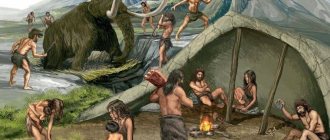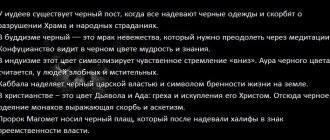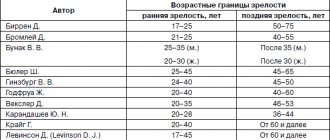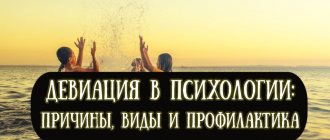What it is
Activity is a form of human activity aimed at cognition, transformation of the surrounding world, oneself and the conditions of one’s existence. This is what distinguishes man from animals and emphasizes the social in human nature.
- Activities are not limited to meeting needs.
- It is determined by the goals and requirements of society.
- Actions are associated with the development of personality and human consciousness (including self-awareness).
- This is a consciously regulated process of human interaction with the world.
In activity, a person acts as a creator, creator. In its process, the following develop:
- intellectual abilities of the individual;
- creative imagination;
- worldview;
- system of ideals and values;
- emotional and aesthetic attitude to the world.
As a member of society, a person is valuable when he leads an active working and social life, commits actions and bears responsibility for them.
Subject of activity
Activity is always objectified. The subject is what it is aimed at. It can exist independently or be created in the process of the activity itself.
Operating principles
The activity is based on the principle of functionality and the principle of consistency.
- The first involves relying on already developed mental elements that are mobilized to achieve a goal.
- The principle of systematicity presupposes the inclusion of individual personality traits, on the basis of which several blocks in the structure can be identified.
Activity structure
Six blocks can be distinguished. Each of the elements is interconnected with others, interpenetrating.
Motives
This is where needs come into play. A motive is an objectified need. The desire to satisfy a need, that is, to obtain a specific item, encourages activity. Activity is impossible without motive.
Goals
Main element. It has two forms of manifestation:
- as a result represented by a person;
- as the desired level of achievement.
Program
A person decides what and how he should do, that is, it is a choice of methods and means, an assessment of his own resources. The work includes the cognitive, motivational, and executive spheres.
Information base
Its effectiveness depends on the adequacy and completeness of information about the conditions of activity.
Making decisions
One is selected from the alternative options, mastered, and rules and criteria for achieving the goal are developed.
Personal qualities that are significant for activities
These are character traits, abilities, inclinations and other individual characteristics that will help you achieve your goal.
Activity Components
Activity always has an internal plan and an external manifestation, between which there is an inextricable connection. From external operations with objects (objective thinking), information, transformed by the psyche, turns into internal images, ideals (imaginative thinking). The process of such a transition is called internalization.
The reverse action (creating something materially through internal representations) is exteriorization.
Action is a tool to achieve a goal
Action is a part of an activity aimed at achieving an intermediate result in specific conditions. Consists of operations - methods of execution according to conditions.
Physical actions
These are external, motor actions with objects that consist of movements.
Intelligent Actions
Internal mental actions with images and concepts based on external actions with objects.
Psyche – regulator of activity
The reflection of the world by the psyche occurs consciously, that is, in the process of actions a person:
- is aware (partially or fully) of the purpose of his actions;
- represents the result;
- perceives and evaluates the conditions in which one has to act;
- builds a step-by-step plan, an algorithm of operations;
- makes volitional efforts;
- observes the process;
- experiences successes and failures.
General concept of activity
Human activity has a number of its own characteristics. Firstly, as already mentioned, human activity is characterized by consciousness (people are aware of the goals, methods and means to achieve them, and predict the results). Scientific psychology states that without a person’s awareness of the goal, one cannot talk about activity, because it will simply be activity. Impulsive behavior is influenced by emotions and needs and is characteristic of animals. Secondly, it is difficult to imagine human activity without the manufacture, use and subsequent storage of tools. Thirdly, questions of the psychology of activity also concern a social nature, because it is society or a group that educates and shows a person what and how to do. Thanks to this type of interaction, a person establishes connections with other people and has different types of relationships with them.
The study of the psychology of activity within the framework of research by Soviet psychologists (A. N. Leontiev, S. L. Rubinshtein, A. A. Smirnov, B. M. Teplov, etc.) showed that the nature of the course and development of various processes in the psyche depends on the characteristics activity of the bearer of consciousness, his motivational sphere. Also, the results of experiments by A. N. Leontyev and P. Ya. Galperin indicate that internal ideal action is formed on the basis of external material through successive changes in the latter. This process was called internalization.
Knowledge, abilities, skills, habits
Knowledge, abilities, skills, or KUN – the basis responsible for organizing and managing practical activities.
Knowledge
These are images of sensations and perceptions, later processed into ideas and concepts. Without them, conscious, purposeful activity is impossible. Knowledge increases the effectiveness of actions.
Skills
This is mastery of a method of performing an action that does not require reinforcement with exercises. Conscious individual control is the main difference between skills. They are closely related to thinking and are impossible without active intellectual activity. Skills allow you to find a way out of non-standard situations and respond to changes in external conditions.
Skills
Skills are actions brought to automaticity. The success of an activity depends on skills. Skills are formed through exercise - repeated repetition of a specific action (actions). The skill is based on a dynamic stereotype, that is, a neural connection between the elements of the action. This happens uncontrollably, but if any inaccuracy occurs, the person immediately notices it. The stronger the nerve connection, the faster and better the action.
Skills can be motor, thinking, sensory, behavioral. The skill is formed in several stages:
- introductory (comprehension of actions, familiarization with implementation techniques);
- preparatory (conscious but inept execution of an action);
- standardizing (unity and automaticity of actions);
- situational (mastery of arbitrariness of action).
Learning new skills is always influenced by old ones. Sometimes this helps, and sometimes it hinders. In the first case we are talking about coordination of skills, in the second – about interference (contradiction). Skills are aligned when:
- the movement system of one skill coincides with the movement system of another;
- one skill is a means of better mastering another;
- the end of one skill is the beginning of another and vice versa.
Accordingly, interference occurs under the opposite conditions.
Habits
A habit is an action that has become a need. Habits can be positive and negative. Habits, like skills, are based on dynamic stereotypes. Habits are formed through:
- imitation;
- multiple random repetitions;
- conscious, goal-directed learning.
They can be a driving force or a braking factor when performing an activity.
Activities
There are many types of activities, but in psychology it is customary to distinguish 4 main ones.
Communication
Communication is the first activity in which a person participates (intimate-personal communication with the mother). In this form of activity the first development of personality occurs.
The purpose of communication is to establish mutual understanding, personal and business relationships, provide mutual assistance, and the educational influence of people on each other.
It is worth noting that some researchers do not consider communication to be an independent activity, but rather call it a means for implementing other activities, achieving the goals of other activities. However, in infancy this species is the leading one.
A game
Play is the main activity of childhood, but it continues at subsequent age stages. Allows you to assimilate the social experience of human activity and human relationships. For adults, play is relaxation and stress relief.
Play activities prepare a person for further education and work. She develops:
- thinking,
- memory,
- imagination,
- attention,
- capabilities,
- will.
It also determines the formation of character.
Studies
Educational activities were separated from work activities. Assumes:
- assimilation of information about the properties of the surrounding world (knowledge), techniques, operations (skills);
- development of the ability to choose techniques and operations in accordance with goals and conditions (skills).
In educational activities, knowledge is acquired, skills and abilities are developed, and abilities are developed.
Work
Labor is an activity aimed at creating a socially significant product. Labor is the basis of human existence, his mental and personal development.
There are other types of activities, but they are all built within the framework of one of the four named or at the junction of several types. The choice depends on the strength, quantity, and uniqueness of the needs of a particular person.
However, at every age, a person performs several types of activities at once, and only one remains the leader. For example, for an adult it is work.
Activity. Psychological characteristics of activity
Activity is a specifically human activity regulated by consciousness, generated by needs and aimed at cognition and transformation of the external world and oneself.
Activity is a process of a person’s active relationship to reality, during which the subject achieves previously set goals, meets various needs and masters social experience. The distinctive features of human activity are its social nature, purposefulness, planning, and systematicity.
Activity structure
Activity has its own structure: motives, methods and techniques, purpose and result
Motives are those internal goals that are related to the needs of the individual and encourage him to perform certain activities. The motive of an activity is what prompts it, for the sake of which it is carried out.
The motives of human activity can be very different: organic, functional, material, social, spiritual.
Motive and goal form a kind of vector of activity that determines its direction, as well as the amount of effort developed by the subject during its implementation. This vector organizes the entire system of mental processes and states that are formed and unfold in the course of activity.
Goals are the most significant objects, phenomena, tasks and objects for a person, the achievement and possession of which constitute the essence of his activity. The goal of an activity is an ideal representation of its future result. It is necessary to distinguish between the final goal and intermediate goals. Achieving the ultimate goal is tantamount to satisfying a need. Intermediate goals include those set by a person as a condition for achieving the final goal.
Goals can be close and distant, personal and public, depending on the importance a person attaches to them and what role his activities play in public life.
Methods and techniques (actions) are relatively complete elements of activity aimed at achieving intermediate goals, subordinated to a common motive.
A complex external action for its implementation may require a number of acts related to each other in a certain way. These acts, or the links into which the action is divided, are operations.
Every activity includes internal and external components.
In its origin, internal (mental, mental) activity is derived from external (objective) activity. Initially, objective actions are performed and only then, as experience accumulates, a person acquires the ability to perform the same actions in the mind. The transfer of external action to the internal plane is called internalization.
Mastering internal activities leads to the fact that before embarking on external activities aimed at achieving the desired goal, a person performs actions in his mind, using images and speech symbols. External activity in this case is prepared and proceeds on the basis of the performance of mental activity. The implementation of mental action externally, in the form of actions with objects, is called exteriorization.
Activities are carried out in the form of a system of actions. Action is the main structural unit of activity, which is defined as a process aimed at achieving a goal). There are practical (objective) and mental actions.
Mastering the activity. Skills
When carrying out an activity, a person interacts with the objective (real or mental) world: the objective situation is transformed, certain objective situations are created, and intermediate results are achieved. Each operation in the structure of action is determined by the conditions of the changing situation, as well as the skills of the subject of the activity.
A skill is a stereotyped way of performing individual actions - operations, formed as a result of their repeated repetition and characterized by the collapse (reduction) of its conscious control. This is a chain of operations fixed in repetition, united through a common function. There are simple and complex skills.
Types of skills
Simple. Simple techniques and actions performed automatically, without sufficient concentration.
Complex. Learned automated motor, perceptual and intellectual complex actions, performed accurately, easily and quickly with little effort of consciousness and ensuring the effectiveness of human activity.
a) motor. Automated influence on an external object using movements in order to transform it, which has been carried out many times before.
b) perceptual. Automated sensory reflection of the properties and characteristics of a well-known object that has been repeatedly perceived before.
c) intellectual. Automated technique, a way to solve a previously encountered problem.
Skills are formed through exercise, i.e. purposeful and systematic repetition of actions. As the exercise progresses, both quantitative and qualitative performance indicators change. A skill arises and functions as an automated technique for performing an action. Its role is to free consciousness from control over the implementation of action techniques and switch it to the goals and conditions of action.
Stages of skill formation
Analytical. Isolation of individual elements of action and mastery of them.
Synthetic. Combining elements into a holistic action.
Automation. An exercise to give the action smoothness and the required speed.
The success of mastering a skill depends not only on the number of repetitions, but also on other reasons of an objective and subjective nature.
Since many skills are included in the structure of actions and various activities, they usually interact with each other to form complex systems. The nature of their interaction can be different: from coordination to opposition, from complete fusion to mutually negative influence..
To maintain a skill, it should be used systematically, otherwise deautomation occurs, i.e. weakening or almost complete destruction of developed automatisms. With deautomation, movements become slower and less accurate, coordination is impaired, movements begin to be performed uncertainly, and require special concentration and increased conscious control.
A skill is a method of performing actions mastered by a subject, provided by a set of acquired knowledge and skills.
Skills are formed as a result of the coordination of skills, their integration into systems using actions that are above conscious control. Through the regulation of such actions, optimal management of skills is carried out, which should ensure error-free and flexible execution of the action.
One of the main qualities of skills is that a person is able to change their structure (skills, operations and actions included in the skills, the sequence of their implementation), while maintaining the same final result.
Skills are based on active intellectual activity and necessarily include thinking processes. Conscious intellectual control is the main thing that distinguishes skills from skills. Activation of intellectual activity in skills occurs at those moments when the conditions of activity change, non-standard situations arise that require prompt adoption of various decisions.
Exercises are of great importance in the formation of all types of skills. Thanks to them, skills are automated, skills and activities are improved in general. Exercises are necessary both at the stage of developing skills and abilities, and in the process of maintaining them. Without constant, systematic exercise, skills and abilities are usually lost and lose their qualities.
Main activities
The emergence and development of various types of human activity is a complex and lengthy process. There are three types of activity that genetically replace each other and coexist throughout a person’s life: play, learning, and work. They differ in final results (product of activity), in organization, and in characteristics of motivation.
A game is a form of human activity in conditional situations, aimed at recreating and assimilating social experience, fixed in socially fixed ways of carrying out objective actions.
There are several types of games.
Often in life there are mixed types of games: subject-role-playing, plot-role-playing, plot-based games with rules, etc.
Types of games
Individual. One person is busy playing the game.
Group. Several individuals are included in the game.
Subject. Associated with the inclusion of any objects in a person’s play activity.
Plot. They unfold according to a certain scenario, reproducing it in basic details, etc.
Teaching is a type of activity whose purpose is to acquire knowledge, skills and abilities by a person.
The main goal of learning is preparation for future independent work, and the main means is mastering the generalized results of what was created by previous work.
The teaching consists of the following components:
assimilation of information about the properties of surrounding objects and phenomena (knowledge);
mastering the techniques and operations that make up the main activities (skills);
mastering ways of using information for the correct selection of techniques and operations in accordance with the goals and conditions of activity (skills).
Teaching can be organized and carried out in special educational institutions. It can be unorganized and occur along the way, in other activities as a by-product, additional result.
Historically, the primary type of human activity is labor. Work as a whole is not a psychological, but a social category.
The subject of psychological study is not work as a whole, but only the psychological components of work activity.
Labor is an activity aimed at creating a socially useful product that satisfies the material or spiritual needs of people.
Directed in accordance with its intention to create a certain result, work, at the same time, is the main way of personality formation. In the labor process, not only is this or that product of the subject’s labor activity born, but the subject itself is formed.
In work, not only its technique is important, but also the person’s attitude towards work. It contains the main motives for human labor activity. This subjective attitude towards work is determined by the urgent needs of a person. To work means to express oneself in activity. All aspects of personality manifestation are reflected in work. Each type of work has its own more or less complex technique that must be mastered. Therefore, knowledge and skills always play a certain role in work. Without knowledge and skills, no work is possible.
Human activity is a complex and diverse phenomenon. All components of a person’s hierarchical structure are involved in the implementation of activities: physiological, mental and social.
Bibliography
Gamezo M.V., Domashenko I.A. Atlas of psychology: Information method. Manual for the course “Human Psychology”: - M.: Ped. society of Russia, 1999. – 397 p.
Zeer E.F. Psychology of vocational education: Proc. allowance. – Ekaterinburg: Ural Publishing House. state prof.-ped. Univ., 2000. – 244 p.
Zeer E.F. Psychology of professions: Proc. allowance. - Ekaterinburg, Ural Publishing House. state prof.-ped. University, 1997. – 244 p.
Klimov E.A. Psychology of professional self-determination: Textbook. manual for universities. – R n/d: Phoenix, 1996. – 512 p.
Nemov R.S. Psychology: Textbook. for students higher ped. textbook establishments. In 3 books. 4th ed. – M.: Humanite. ed. VLADOS center, 2002. - Book 1: General fundamentals of psychology - 688 p.
Nemov R.S. Psychology: Textbook. for students higher ped. textbook establishments. In 3 books. 4th ed. – M.: Humanite. ed. VLADOS Center, 2002. - Book 2: Educational Psychology - 496 p.
Petrovsky A.V., Yaroshevsky M.G. Psychology. Education for universities. - M.: Publishing house. , 2000. –512 p.
8. Glukhanyuk N.S., Semenova S.L., Pecherkina A.A. General psychology: Textbook for universities. M.: Academic project; Ekaterinburg: Business book, 2005. 36
Information about the work “Activity. Psychological characteristics of activity"
Section: Psychology, pedagogy Number of characters with spaces: 12053 Number of tables: 0 Number of images: 1
Similar works
The influence of psychological characteristics of a manager’s activities in an enterprise
48394
1
1
... pay attention to yourself, direct their activity in the right direction, and then control the person’s behavior. Chapter 2. Analysis of the psychological characteristics of the activities of a manager in an enterprise 2.1 General characteristics of the enterprise General provisions. 1.1 Enterprise without forming a legal entity “Bleskin V.Yu.” created in accordance with the Federal Law on Private Entrepreneurship. ...
Psychological characteristics of human activity
11345
0
0
... the time to achieve such progress, to create a grandiose world of spiritual and material culture. All this is due to the active nature of human activity. Activities are always purposeful, active, aimed at creating some product. Human activity has the following main characteristics: motive, goal, subject, structure and means. The motive of activity is called...
Psychological characteristics of the workforce
18206
0
0
... relatively weak and ineffective, at later ones - strong and decisive. In the manager’s arsenal, among the many means of influencing employees, there is a powerful weapon of psychological influence - the opinion of the workforce. The leader must constantly ensure that the opinion of the team contributes to the strengthening of its potential, the proper education of people, and the improvement of their attitude towards...
Features of the psychological characteristics of the criminal’s personality
24116
0
0
..., for example, official position, special responsibilities or special position in relation to the victim, etc., as well as the psychological characteristics of the criminal’s personality in the entire complex complex of intellectual, emotional-volitional and other qualities. All these qualities, signs, personality traits have quite a capacious content. In legal psychology, the personality of the subject who committed...
Individual style of activity
This is an adaptation of the human nervous system and body characteristics to the activity being performed. The basis of individual style is:
- human temperament;
- skills;
- skills;
- experience.
The purpose of such a device is to achieve the best result at the lowest cost. Temperament determines the success and failure of a person in a specific activity.
Afterword
Conscious purposeful activity is the difference between people and animals. In its process, a person creates objects of material and spiritual culture, transforms his abilities, ensures progress (although sometimes regression) of society, influences nature (preserves or destroys).
Any activity is a creative way beyond the natural, work on oneself and the world. Man not only consumes, but also creates. With her help he influences his life.
Thanks to it, the mental development of the individual is carried out. However, at the same time, mental processes (perception, attention, imagination, memory, thinking, speech) act as components and even separate types of activity.
Theories of activity psychology
Activity theory is one of the main methodological foundations for conducting research into the psyche and consciousness. Within its framework, activity is studied as a phenomenon that mediates all mental phenomena and processes. This scientific view was criticized by foreign psychologists. The literature on activity psychology dates back to the 20s of the twentieth century and continues to develop today.
There are two interpretations in this direction. The first is described by S. L. Rubinstein, who became the developer of the principle of the unity of consciousness and activity. The second was created by the famous scientist A. N. Leontyev, who raised the question of the commonality of the structure of external and internal mental activity.









